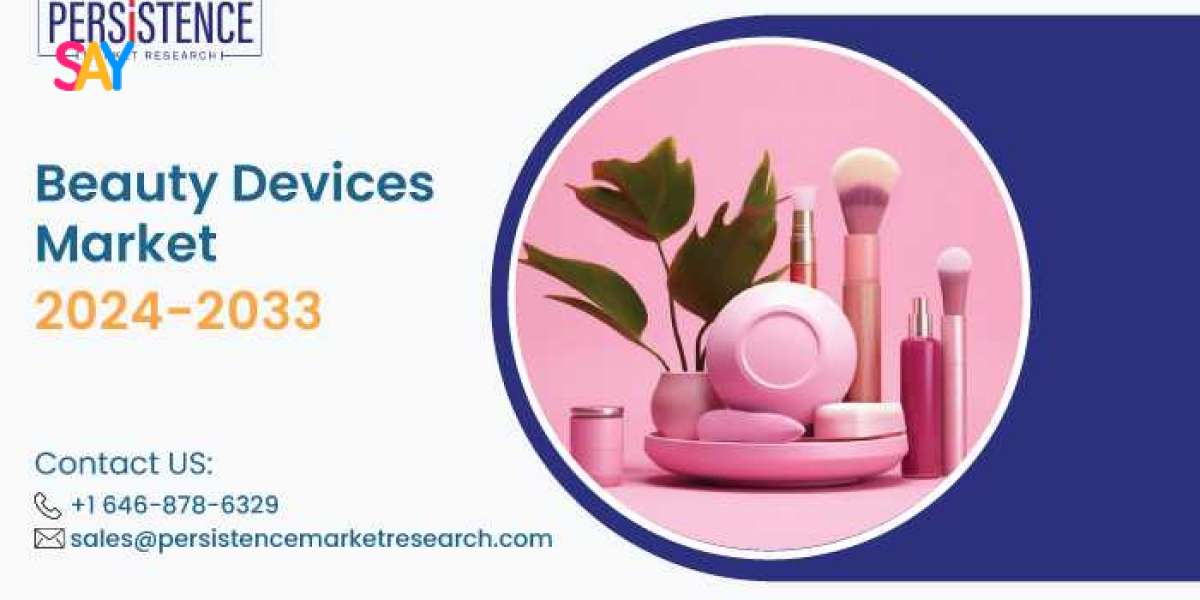The global beauty devices market is revolutionizing personal care as advanced technologies bring professional treatments directly into consumers' homes. Once reserved for clinics and salons, solutions for skincare, hair removal, and anti-aging treatments are now widely accessible through portable, user-friendly devices.
Read More: https://www.persistencemarketresearch.com/market-research/beauty-devices-market.asp
The Shift: Professional Treatments at Home
Historically, professional-grade beauty treatments required frequent clinic visits and high costs, often limiting access. Today, advancements in beauty technology have made these solutions portable, effective, and easy to use. Consumers can now perform treatments like laser hair removal, anti-aging microcurrent therapy, and LED skin rejuvenation in the comfort of their homes.
Key Factors Driving the Shift:
- Cost Savings: At-home beauty devices offer significant savings over recurring salon and clinic visits.
- Convenience: Consumers can seamlessly integrate treatments into their daily routines.
- Technological Advancements: Innovations like AI-driven personalization and IoT-connected devices ensure professional-quality results.
- Pandemic Influence: COVID-19 accelerated the shift as people sought alternatives to in-person treatments during lockdowns.
Technologies Redefining the Market
The beauty devices market thrives on innovation, with technologies enabling more precise, efficient, and customizable treatments:
Laser and IPL Devices
Laser and Intense Pulsed Light (IPL) technology are widely used for long-term hair removal and skin rejuvenation. Compact, user-friendly devices now provide clinical-grade performance for home users.LED Light Therapy
Devices leveraging LED technology offer solutions for acne treatment, wrinkle reduction, and improving skin tone. Their non-invasive and quick results are attracting skincare enthusiasts worldwide.Microcurrent Technology
Microcurrent facial devices deliver low-voltage currents to tone and lift facial muscles, reducing signs of aging. These tools replicate popular clinic treatments like facial sculpting and firming.AI-Powered Smart Devices
Artificial Intelligence enhances beauty devices by analyzing skin conditions and recommending personalized treatments. Smart cleansing brushes, facial analyzers, and connected apps are leading this trend.Ultrasonic and Radiofrequency Devices
Ultrasonic cleansers and RF devices promote collagen production, improving skin elasticity and reducing wrinkles, giving consumers a clinic-level anti-aging experience at home.
Market Drivers Accelerating Growth
Growing Beauty Consciousness
Consumers are increasingly prioritizing self-care, skin health, and grooming. Beauty devices enable regular treatments without the constraints of clinic visits.Rise in At-Home Beauty Trends
At-home treatments align with modern lifestyles, offering time-saving solutions for working professionals, parents, and older adults.Personalized Beauty Solutions
Consumers seek devices that cater to their unique needs, from personalized skincare routines to targeted treatments. AI and smart technology make this possible.Male Grooming Expansion
The growing adoption of grooming tools among male consumers, such as trimmers, shavers, and skin therapy devices, contributes significantly to market growth.Aging Population Fuels Anti-Aging Devices
Demand for non-invasive anti-aging solutions is rising as the global population ages, driving the adoption of devices for wrinkle reduction, skin tightening, and toning.
Emerging Trends Transforming the Market
Portable and Multi-Functional Devices
Compact devices offering multi-functional treatments—cleansing, toning, and anti-aging—are gaining popularity for their versatility and ease of use.Sustainability and Eco-Friendly Designs
Manufacturers are prioritizing sustainable materials and rechargeable devices to align with eco-conscious consumer values.Subscription-Based Models
Brands are offering subscriptions for device accessories, replacements, and upgrades to enhance customer loyalty and product life cycle.Inclusivity in Beauty Tech
Devices are becoming more inclusive, catering to different skin tones, hair types, and unique consumer needs, promoting diversity in the beauty industry.Wearable Beauty Tech
Innovations in wearable devices, such as smart skin patches and LED masks, are enabling targeted treatments that offer convenience and efficiency.
Regional Market Dynamics
- North America dominates the market, driven by early adoption of innovative beauty technologies and strong consumer purchasing power.
- Asia-Pacific is witnessing rapid growth as rising disposable incomes, beauty consciousness, and urbanization fuel demand in countries like China, Japan, and South Korea.
- Europe continues to lead in sustainable and anti-aging beauty device trends, supported by growing awareness of advanced skincare solutions.
Competitive Landscape
The beauty devices market is highly competitive, with companies focusing on product innovation, affordability, and user-centric designs. Major players include:
- Foreo: Known for innovative skin cleansing and anti-aging devices.
- NuFACE: Leading in microcurrent facial devices for at-home lifting treatments.
- Philips: Dominates the at-home IPL hair removal market.
- Panasonic: Offers versatile grooming and skincare tools.
- L'Oréal: Innovates with AI-driven beauty devices for personalized treatments.
These companies are investing heavily in RD to create smarter, safer, and more effective devices, meeting the growing consumer demand for clinic-like results at home.
Future Outlook
The future of the beauty devices market is bright, with technological innovations and evolving consumer preferences paving the way for sustained growth. As AI, IoT, and wearable technology become more sophisticated, beauty devices will become smarter, more efficient, and increasingly affordable. The focus will remain on enhancing user experience through personalization, connectivity, and eco-friendly designs.
With rising beauty consciousness and the growing emphasis on self-care, at-home beauty devices will continue to reshape the personal care landscape, making professional treatments accessible to all.
Conclusion
The beauty devices market is at the forefront of personal care innovation, transforming treatments once exclusive to clinics into accessible, at-home solutions. Driven by convenience, affordability, and technological advancements, the market is redefining self-care routines worldwide. As consumers embrace smarter, more sustainable, and inclusive beauty devices, the industry is set to shine even brighter in the years to come.




